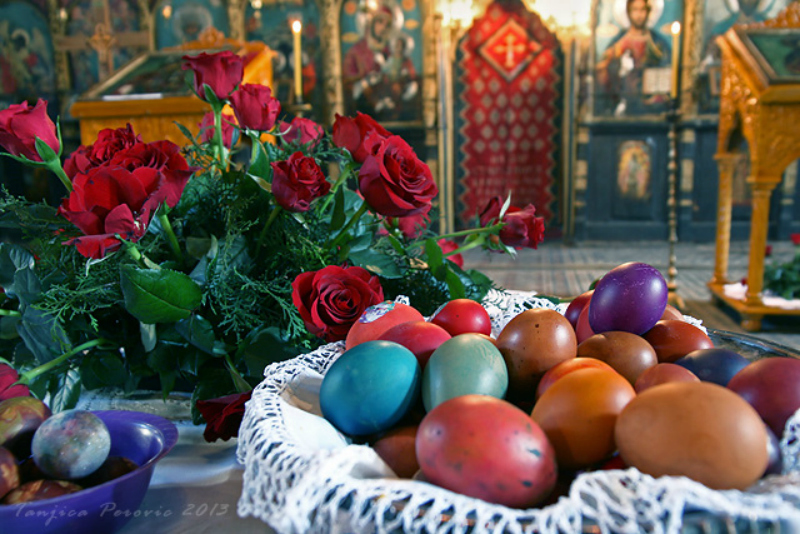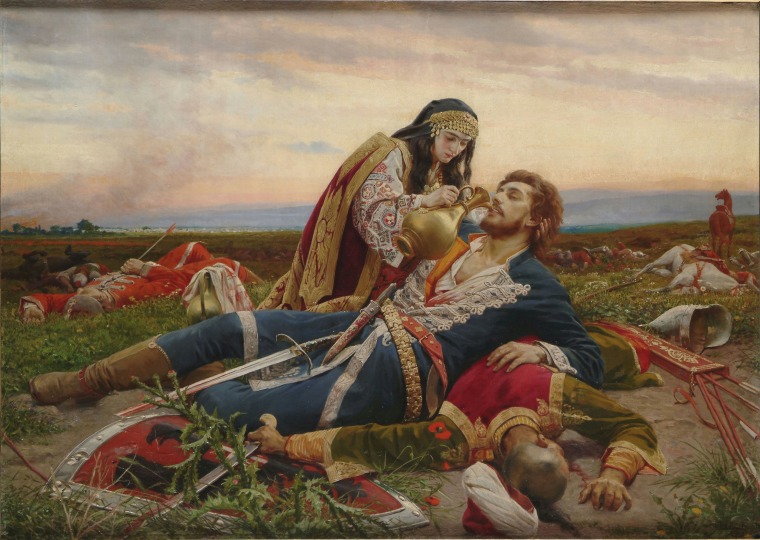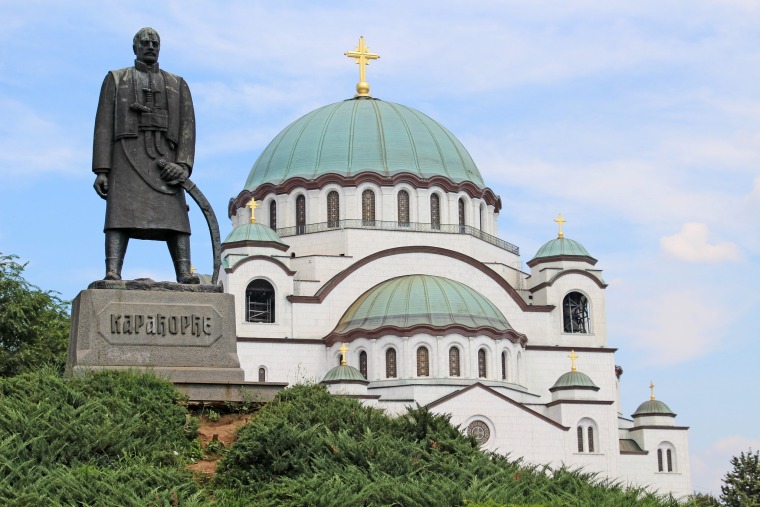

On this day the Serbian Orthodox church and its believers celebrate Easter, one of the biggest and most important Christian holidays. Traditionally, Serbs spend this special Sunday together with their families, friends and people dear to their hearts. Their houses are full of joy and laughter and their baskets filled with beautifully decorated eggs.
In the Christian world, Easter (Uskrs or Vaskrs in Serbian) is together with Christmas one of the most important and beloved holidays.
It celebrates the resurrection of Jesus Christ from the dead and is celebrated not only in Serbia but in many countries and cultures worldwide. However, it is not celebrated on the same day everywhere.

Western Christians, as well as some Eastern Christians, follow the Gregorian calendar, while Serbian and Russian Orthodox Churches follow the Julian calendar. According to the Julian calendar Orthodox Easter is celebrated between the 4th of April and the 8th of May but always on the first Sunday which comes after the full moon which comes after the Spring equinox.
Now that we know when Easter is celebrated, we can talk about the all the wonderful and joyful traditions which mark this festive spring holiday in Serbia.
The days before Easter
Even though Easter is celebrated on a Sunday, the days that come before it are also rather festive. The preparations for Easter start a week earlier. The most significant days before it are the Veliki četvrtak (Orthodox Maundy Thursday) and the Veliki petak (Orthodox Good Friday).

Veliki četvrtak commemorates the Maundy and Last Supper of Jesus Christ with the Apostles and on this day believers go to communion. Veliki petak is considered the saddest day in Christianity as it is the day when Christ was crucified at Calvary. And while most believers fast only on this day, some of the more religious ones start the fast 40 days before Easter.
Easter egg decorating
In the past the eggs were coloured and decorated on Veliki četvrtak, but nowadays this is usually done on Veliki petak. Also, in the past eggs were traditionally painted red which symbolises the blood Jesus spilled on the crucifix. Nowadays the eggs are painted in every colour imaginable and decorated in a thousand different ways, with drawings, stickers and decorations of all sorts.

There is an old Serbian tradition that the first boiled egg has to be painted red. This egg is called “Čuvarkuća” (meaning guardian of the home), it’s said to bring good health and luck to the household, and it’s kept until next Easter.
The day of Easter
In Serbia, this Sunday is a very jubilant day. Serbs celebrate Easter with their families by preparing a festive lunch. The table is set and different Serbian delicacies served. You often find homemade cheese, “kajmak”, ham, “pršuta”, all sorts of vegetables, and the traditional “pogača” as a part of the Easter lunch, but the stars of this holiday meal are the coloured eggs.

One of the Serbian customs regarding this holiday is that upon entering someone’s house the guest says ,,Hristos Voskrese” (“Christ has resurrected”) and the host replies ,,Vaistinu voskrese” (“Truly has resurrected”). The children’s favourite custom is the one where the “Uskršnji zeka” (Eastern bunny) brings them eggs.
Egg tapping
Of course, the most interesting Easter tradition is the egg tapping. In egg knocking, the favourite event of children and even adults, the winner is the contestant whose egg doesn’t crack. The prize: the opponent’s egg.

Pranks with wooden eggs are also customary when speaking of egg cracking. It is important to mention that these “egg battles” have evolved and now there are whole tournaments organized. The most famous one is the World Egg Tapping Championship in Mokrin, a peaceful village in Vojvodina, Serbia.









